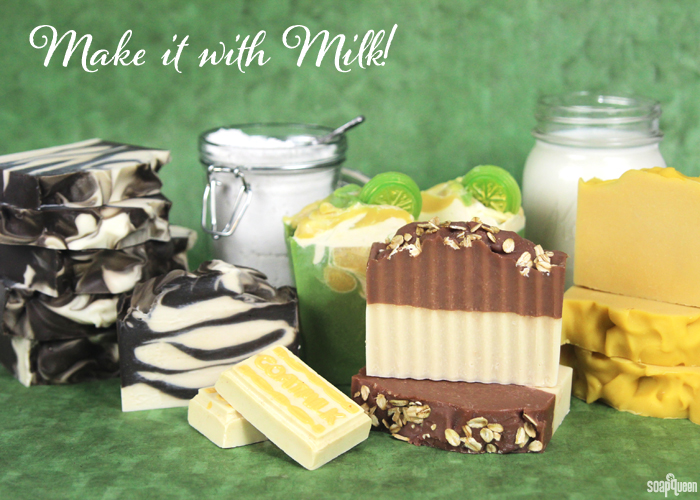
Soap making with milk is popular because of milk’s natural moisturizing properties. For the past two weeks, the blog has been full of soapy projects made with milk and milk powders. Milk can replace up to 100% of the water in your cold process recipe. Because milk contains natural sugars that can burn when introduced to sodium hydroxide lye, it’s important to keep temperatures cool. My favorite way to prevent scorched lye milk is to freeze the milk in advance and add the lye slowly. For more information on creating the lye and milk mixture, check out the How to Add Lye to Milk for Cold Process Soap blog post.
Once you have you milk and lye properly prepped, it’s time to make soap! In the Buttermilk Bastille Baby Bar video on Soap Queen TV, creamy buttermilk replaces 100% of the water. This bastille bar is made with 80% olive oil, which creates a very gentle soap that is perfect for delicate skin. Carrot puree is added at trace to give a soft, natural yellow hue. This recipe was generously shared by Amanda from Lovin Soap. To see the original blog post featuring this recipe, click here.
If you love the natural look of these bars, you may also like the subdued colors in the Goat Milk & Oatmeal Cold Process Soap Tutorial. Colored with brown oxide and titanium dioxide, this bar is made with powdered goat milk. Goat milk contains vitamins A, D and B6, as well as lactic acid, which helps keeps skin smooth. This bar also contains oat extract and colloidal oatmeal to add skin-soothing properties. If you’re looking for even more recipes containing goat milk, watch the Goat Milk Soap Tutorial video on Soap Queen TV.
Are you wanting all the amazing properties of goat milk, but don’t make cold process soap? Bramble Berry’s Goat Milk Melt and Pour Base contains a full 10% liquid goat milk. The Lemon Goat Milk Melt and Pour Bars are made with this amazing base, along with zesty Lemon Essential Oil. Lemon peel gives these guest sized bars natural color and a hint of exfoliation. If you’re looking for even more goat milk melt and pour projects, this Goat Milk Soap Mold Debut project is easy to make and would make a great gift.
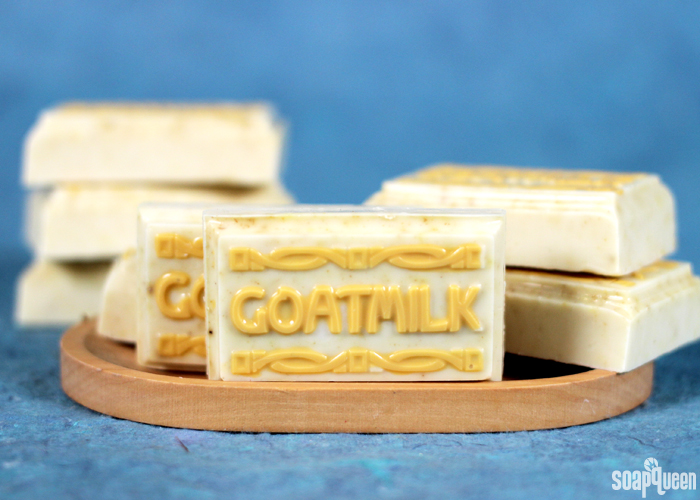
Coconut milk is another option that feels wonderful on the skin. The Lime in the Coconut Milk Cold Process Soap was inspired by the popular song, and is full of tropical flair. It’s scented with a zesty blend of Lime Essential Oil and Coconut Lemongrass Fragrance Oil. Melt and pour embeds are inserted into the textured top, creating the illusion of a fruity drink. Another method of using coconut milk powder in cold process soap is to add the milk at trace, as shown in the Hawaiian Shirt Cold Process Tutorial.
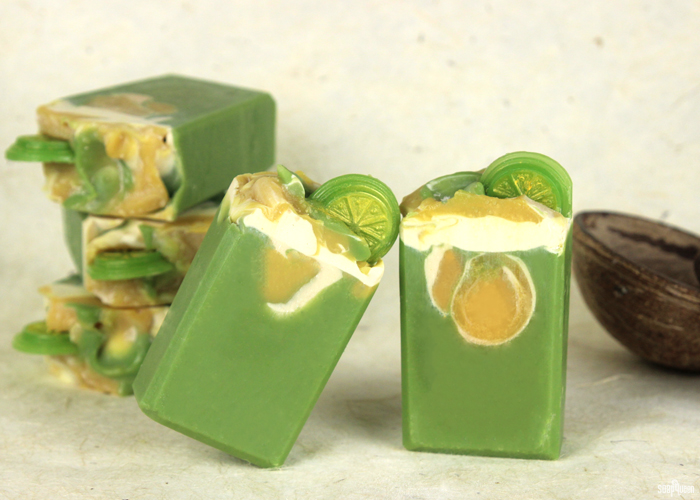
Coconut milk powder is also used in the Silky Coconut Milk Face Mask Tutorial. This versatile mask can be combined with water to create an oil-absorbing product, or mixed with oil to make a moisturizing mask. Evening primrose extract is added for its anti-inflammatory properties, making this mask great for sensitive skin.
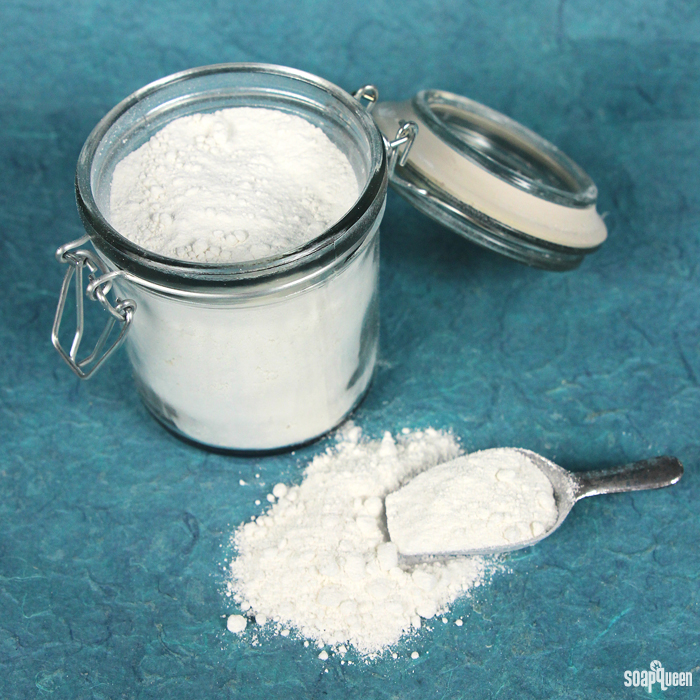
Cow milk is often overlooked as a soaping ingredient, but it also produces a wonderfully luxurious bar. In the Creamy Cow Milk Cold Process Tutorial, whole cow milk replaces the water. Contrasting layers of white and black create a pattern similar to cow coloring. The combination of Vanilla Rosewood Fragrance Oil and Grass Stain Fragrance Oil smells warm and green, similar to a happy, clean barn.
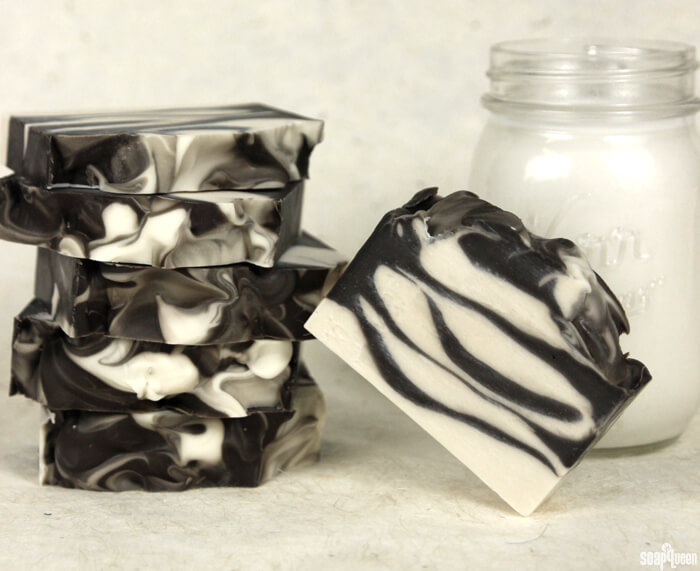
If you are thinking about making a milk project, I definitely encourage you to do so! Milk adds wonderful properties to your final bar. Just make sure you take the necessary steps to prevent scorching the milk or the soap overheating. I’ve had a few milk soap mishaps, but practice makes perfect. If you’d like to see an example of milk soap gone wrong, check out the Coconut Milk Soap Volcano post. Luckily I was able to salvage it with the hot process technique, you can see the final bar here.
Have you ever made soap with milk before? What milk did you use, and how did the soap turn out?
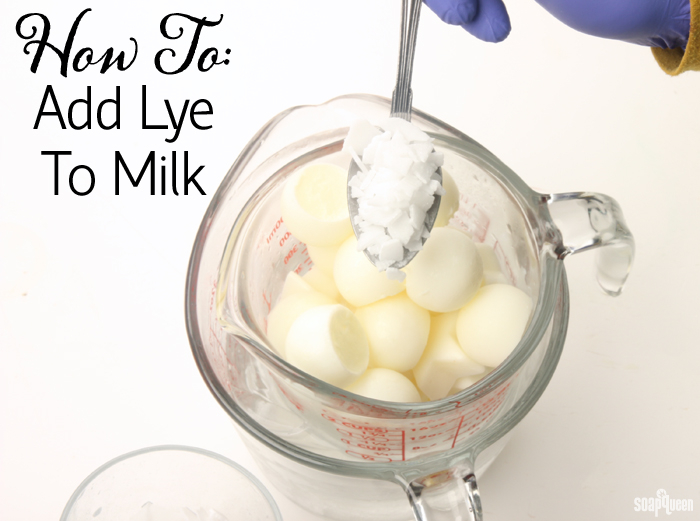
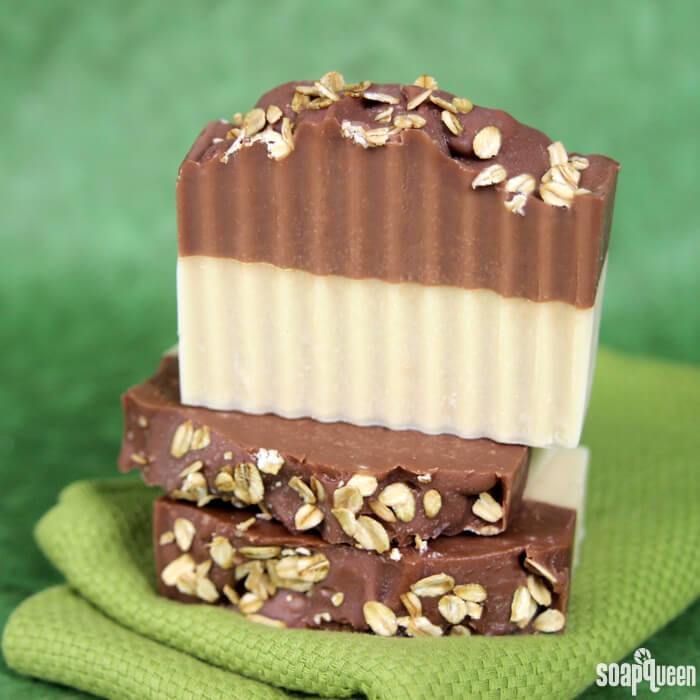
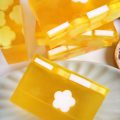

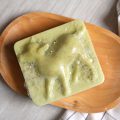
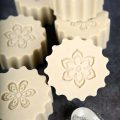
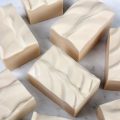
I have seen in a soaping video, that after trace was formed this lady added 6oz of condensed goats milk in a can. The oil was olive oil. I’d like to hear from Bramble Berry on this one and what they think.
Thank you.
Hi Donna!
We haven’t experimented with condensed goat milk before, so I’m not entirely sure! One method of working with milk is to add it at trace and subtract from your main water amount. That helps cut out some of the work of freezing the milk ahead of time and mixing lye in slowly. After that milk is added at trace, we still recommend popping the soap in the freezer to prevent any scorching. Read more about that in this book: https://www.brambleberry.com/E-Book-Making-Milk-Soap-from-Scratch-P5257.aspx
With the condensed milk, I would recommend making a small test batch to see how it works! You can also use regular liquid goat milk. 🙂
-Kelsey with Bramble Berry
Any idea how long until soap starts to gel?
I made the oatmeal milk and honey soap last night. My brown layer took a while to reach trace (I didn’t blend long enough). I skipped making the design on top because I was scared it would start gelling.
I put it in the freezer to prevent, just wondering if you could guess how much time I actually have for design.
Hi Malissa!
How long before the soap starts gelling depends on a variety of factors, including the ingredients, temperatures, etc. For instance, I’ve had a soap start gelling about 5 minutes after it was in the mold. However, that soap did have banana and cinnamon leaf essential oil, which can both overheat the soap.
Most soap loaves don’t start gelling until they’re in the mold and insulated. What were the temperatures of your oil and lye milk? How warm is your soaping area? Let me know and I can help you out. 🙂
-Kelsey with Bramble Berry
I usually mix my lye and oils when both are between 80-100 degrees.
So last night my lye/milk was 80 and my oils were around 90.
My area was around 70degrees.
I’m new at this so any help/tips are appreciated. 🙂
Thank you so much for the temperatures! Because they are lower and you’re working in a cooler area, the soap would need to be warmed up quite a bit before it gels. Warmer soap temperatures and insulating the mold helps the soap gel. You should have plenty of time to get your design and pop it in the freezer! 🙂
Read more about when to insulate in this post: http://www.soapqueen.com/bath-and-body-tutorials/tips-and-tricks/when-to-insulate-handmade-soap/
-Kelsey with Bramble Berry
I’m defenately going to try your baby bar soap, but I’m going to use mother milk instead of buttermilk. Can’t wait to try! Thank you for the recepi 🙂
You’re very welcome Heidi! Have fun making that recipe. It feels amazing on the skin. 🙂
-Kelsey with Bramble Berry
What do you think of using cashew milk in CP soap?
Hi Crystal!
We haven’t done a lot of testing with cashew milk, but I imagine it would feel great in your soap! I would recommend using the freeze method so it doesn’t get too hot and scorch.
If you do give it a try, let us know how it goes! 🙂
-Kelsey with Bramble Berry
Why not simply add the milk at trace? I do 1:1 water/lye, then the rest in milk added at trace.
Hi Kathy!
You can definitely do that as well! Freezing your milk is just one of the ways to incorporate your milk. Adding it at trace works well too. 🙂
-Kelsey with Bramble Berry
What would i do with the lye? and would i have to put the milk in frozen or cold? thanks.
Hi Matt!
If you add the milk at trace, you’ll want to mix your lye with distilled water so it dissolves nicely. To find out how much water to add, you can use our Lye Calculator: https://www.brambleberry.com/Pages/Lye-Calculator.aspx
Then, you can add the milk at trace. How much milk you add is definitely personal preference! I would recommend starting out with 10-20% of your water amount. Make sure to discount that water so your soap doesn’t get too wet. Discounting the water means you would add less to make up for the extra milk added at trace. 🙂
This book has more information on working with milk and may be helpful for you: https://www.brambleberry.com/E-Book-Making-Milk-Soap-from-Scratch-P5257.aspx
-Kelsey with Bramble Berry
I tried a goat milk soap, and it worked well using the instructions provided. Thanks! I have a (possibly very dumb) question, though. Can you simply make a water/lye solution as usual, let it cool, and then stir in the powdered milk? Or does it get hot all over again when milk meets cold lye water? Thanks again!
Hi Leanne!
So glad that recipe worked well for you! Also, that’s a great question. You can definitely mix the lye and the water beforehand and let it cool. Many soapers like to do that to avoid the lengthy mixing process involved with frozen milk. 🙂
When the powder is added to the water, it can start to heat up again as the lye reacts with the milk fat. To prevent any scorching, you can cool your lye water mixture in the fridge before adding the powder.
Some people also like to soap at normal temperatures, then add the powdered goat milk at trace. After that’s all mixed in, you can pop your soap in the freezer to keep it cool. 🙂
-Kelsey with Bramble Berry
Powdered goat milk: https://www.brambleberry.com/Powdered-Goat-Milk-P4933.aspx
I’d like to try the cow milk process soap recipe, can I replace it with evaporated goat milk? if so do I need to alter the recipe in any way? Thank You
Hi Dee!
We didn’t try evaporated goat milk with that recipe, but I believe it would work just fine! It does have some of the liquid removed, so it will be thicker when you’re working with it. However, it should still add a nice creamy feeling to your soap. A small test batch may be helpful as well. 🙂
-Kelsey with Bramble Berry
Creamy Cow Milk Cold Process Tutorial: http://www.soapqueen.com/bath-and-body-tutorials/cold-process-soap/creamy-cow-milk-cold-process-tutorial/
Since you are talking about milks, I feel like I can ask for some advice. We milk dairy goats and I wanted to try making some soap with the milk. I froze goats milk in an ice cube tray. I am part of the soap making club and have the Soap Crafting book, so I thought I would use the Goat Milk Cylinder Pour recipe as a starting place. I didn’t plan to do the cylinder pour, just used silicone loaf molds. I substituted 5 oz of frozen goats milk for the powdered goats milk and 3 oz water called for in the recipe. I was able to combine everything without any trouble, but I could not get a thicker trace – even with stick blending. I decided just to pour into the molds and wait to see what happens. Did I use too much liquid by making the substitution? Will the soap set up eventually, or do I need to start over? Thank you
Hi Dawn!
I think your recipe will be just fine! Although the slurry calls for 5 ounces total (2 ounces of powdered goat milk and 3 ounces of distilled water), there is still only about 3 ounces of liquid. So, 3 ounces of fresh goat milk would be a great substitute.
However, the extra liquid won’t hurt your recipe! It will just take a little longer to unmold and cure, and may be a bit softer. It will still feel great on your skin. 🙂
-Kelsey with Bramble Berry
Soap Crafting book: https://www.brambleberry.com/Soap-Crafting-Book.aspx
Thank you for responding!! I appreciate your help. Dawn
You’re welcome! 🙂
I work with a friend who keeps a heard of angora goats and sells their fibre and her/our line of bath products. She’d been felting my soap for years when the chance for a year round supply of farm fresh goat’s milk (mostly her own) became available and we now make only goat’s milk soap. Since I don’t get the milk right away freezing it has been terrific. She pours the fresh milk into ice cube trays and I get the cubes. Its made mixing lye a lot easier. I heat only the solid oils, then add the liquid ones to keep the temperatures low. I know a lot of soapers recommend otherwise but I’ve found putting in my fragrance and any additives and mixing well at this point works best for me. Then I add the hundred percent milk and lye solution (with a high percentage of liquid) blend until trace and pour. (Afraid I’m not into the fancy multi-coloured pouring, not having colorants in our soap has been part of our marketing so that does keep some of what I do simpler even if it wouldn’t rate for a lot of soapers. Afraid when I designed our line I focused on ingredient quality rather than making a decorative bar.) Most all of our fragrances discolour the soap slightly so letting the milk darken the soap isn’t a problem. The goat’s milk does make a tremendous difference, while our former soaps were popular people just love the goat’s milk soap, they really do feel the difference!
Hi there!
That is awesome, what a great use for excess goat milk! It’s a great way to keep the milk fresh and makes it easy for you because all you have to do is weigh it out. Your soap sounds simply lovely.
I agree with you, I just love the way milk soap feels. It’s silky and creamy, and leaves your skin feeling so soft. I’m definitely a fan! 🙂
-Kelsey with Bramble Berry
I have used many different types of milk in making soap but I have never done it the way you show (by freezing it first and then adding the lye–I’m too impatient!) I add my milk to my oils and then discount the water that I mix with the lye by the same amount as the milk I have put in the oils. I have seen some people add the milk at trace or at emulsification, but right into the oils works best for me (I blend it a little with the stick blender first before adding the lye water). You do really need to stir the lye mixture well to make sure that all of the lye dissolves. My top two favorite milks to use are evaporated goat’s milk (it is thick and concentrated so I get great results) and oat milk (oat water?) is my most favorite. I use steel cut oats at about a 3 parts distilled water to 1 parts oats. Let them soak for an hour or so (don’t cook them) and then stick blend them well to make the milk. I strain this three times through a metal strainer (sieve) and add that into my oils. I also like powdered buttermilk and I mix it very concentrated, not too thick but more powder than the directions on the can call for. I would love to see you do a video where you show how to use milk in oils, it is so fast and the soap turns out really nice. I have to say, though, that since I have never used the frozen milk method, I can’t make a comparison. Thanks for all the great tutorials!
What temps do you soap at Pam? …and do you refrigerate or freeze immediately after getting the soap into the mold? I’d be afraid of overheating or scorching as soon as I added my lye water mixture into my oil/milk mixture. thanks
I’ve soaped at many different temperatures, but usually about 90-100 degrees. I’ve never had scorching or even any darkening, but the soap does get warm like any soap with sugars. I sometimes refrigerate, but normally I just leave it uncovered in a moderate temp room. Don’t CPOP, I tried that once and got a sizable crack!
Hi Pam!
That’s such a great idea, thanks so much for sharing! I love the idea of adding the milk right into your oils – it seems faster for sure. Thanks for your suggestion too, we’ll definitely keep that in mind. 🙂
-Kelsey with Bramble Berry